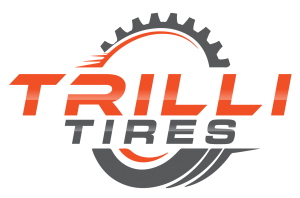Your car’s brake system is one of its most critical safety features, allowing you to slow down and stop when necessary. Understanding how it works can help you appreciate the importance of regular maintenance and ensure your vehicle’s safety. In this comprehensive guide, we’ll break down the key components of your car’s brake system, shedding light on their functions and importance.
Brake Pedal
At the heart of your car’s brake system is the brake pedal. This is the part you interact with directly when you want to slow down or stop your vehicle. When you press the brake pedal, it initiates a series of actions that ultimately lead to the vehicle coming to a halt. The pedal is connected to the master cylinder through a hydraulic system, which is responsible for transmitting the force you apply to the brakes.
Master Cylinder
The master cylinder is a vital component of your car’s brake system, located near the brake pedal. It plays a central role in converting the mechanical force from your foot into hydraulic pressure. When you press the brake pedal, it pushes a piston inside the master cylinder, pressurizing the brake fluid. This pressurized fluid is then sent through the brake lines to the wheels, where it activates the brake callipers or brake drums.
Brake Lines
Brake lines are the conduits that carry brake fluid from the master cylinder to the brakes at each wheel. They are typically made of steel or another durable material to withstand the high pressures involved. Over time, brake lines can corrode or develop leaks, which is why regular inspections are essential to ensure the integrity of your brake system. Any issues with the brake lines can result in a loss of braking performance or even a complete failure.
Brake Callipers and Brake Drums
Brake callipers and brake drums are responsible for applying friction to the wheels, which slows down and ultimately stops your vehicle. Depending on your car’s design, it may have either disc brakes or drum brakes on each wheel.
Disc Brakes (Brake Callipers):
Disc brakes use brake callipers that house brake pads. When you apply the brakes, hydraulic pressure forces the brake pads to squeeze against a rotating disc (rotor). This action generates friction, which slows down the wheel and, consequently, the vehicle.
Drum Brakes (Brake Drums):
Drum brakes, on the other hand, use brake drums that contain brake shoes. When you press the brake pedal, hydraulic pressure forces the brake shoes against the inner surface of the drum, creating friction that slows down the wheel. While disc brakes are more common in modern vehicles due to their superior performance, some older cars and certain rear-wheel setups still use drum brakes.
Brake Pads and Brake Shoes
Brake pads and brake shoes are the components that directly contact the rotating parts of your car’s brake system to create the necessary friction for stopping. They are subjected to immense heat and wear during braking, making them consumable parts that require periodic replacement.
Brake Pads (for Disc Brakes):
Brake pads are flat, semi-metallic or ceramic components that fit inside the brake callipers. When you apply the brakes, the brake pads are pushed against the rotor to create friction. Due to the high friction and heat generated during braking, brake pads can wear out over time, leading to reduced braking performance. Regular inspections can help you determine when it’s time to replace them.
Brake Shoes (for Drum Brakes):
Brake shoes are curved components that sit inside the brake drums in drum brake systems. When you press the brake pedal, hydraulic pressure forces the brake shoes to press against the inner surface of the drum, creating friction. Like brake pads, brake shoes also wear out and require replacement periodically.
Brake Fluid
Brake fluid is a crucial but often overlooked component of your car’s brake system. It serves as the hydraulic medium that transmits the force from the master cylinder to the brakes. Brake fluid is designed to withstand high temperatures and pressure, ensuring consistent brake performance. However, it can become contaminated or deteriorate over time, leading to reduced braking efficiency. Regular brake fluid checks and changes are essential to maintain your brake system’s reliability.
Anti-lock Braking System (ABS)
Many modern vehicles come equipped with an Anti-lock Braking System (ABS). ABS is an advanced safety feature that prevents your wheels from locking up during hard braking. It does this by modulating brake pressure to each wheel, allowing you to maintain steering control even under heavy braking. Understanding your car’s ABS and its components, such as sensors and control modules, can help you appreciate its role in enhancing safety on the road.
Brake System Maintenance
To ensure the reliability and safety of your car’s brake system, regular maintenance is essential. This includes brake pad and shoe inspections, brake fluid checks and changes, and overall system evaluations. If you notice any unusual noises, reduced braking performance, or warning lights on your dashboard, it’s crucial to have your brake system inspected by a qualified technician immediately.
Your car’s brake system is a complex but vital network of components that work together to ensure your safety on the road. Understanding these components and their functions can help you appreciate the importance of regular maintenance and prompt attention to any brake-related issues. By taking good care of your brake system, you can ensure that your vehicle stops reliably and keeps you and your passengers safe.
For all your tire and brake system needs in Richmond Hill, visit TrilliTires. Our expert technicians are ready to assist you with top-quality tire and brake services to keep your vehicle in peak condition. Contact us today to schedule an appointment and experience the difference in service and safety with TrilliTires.
